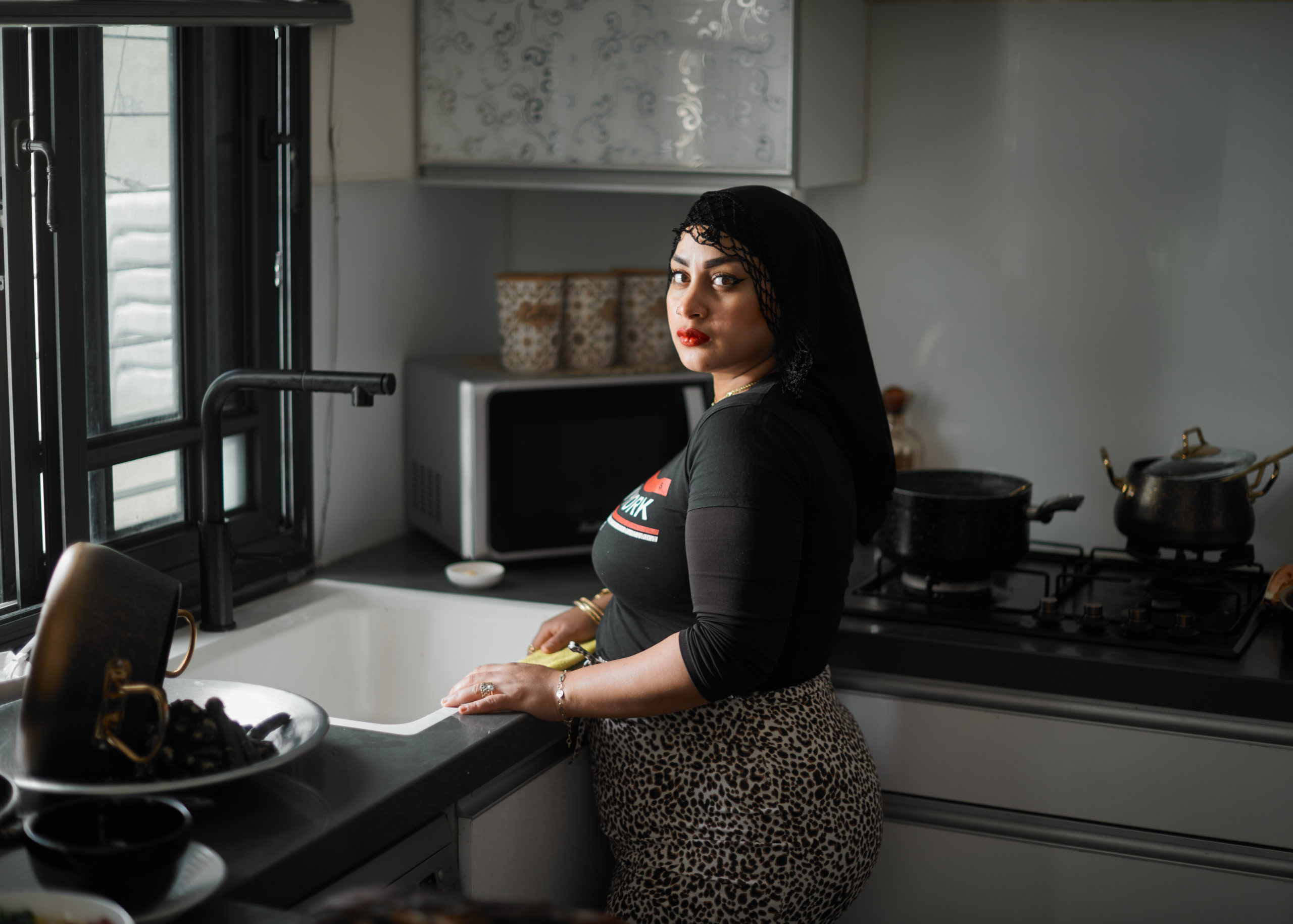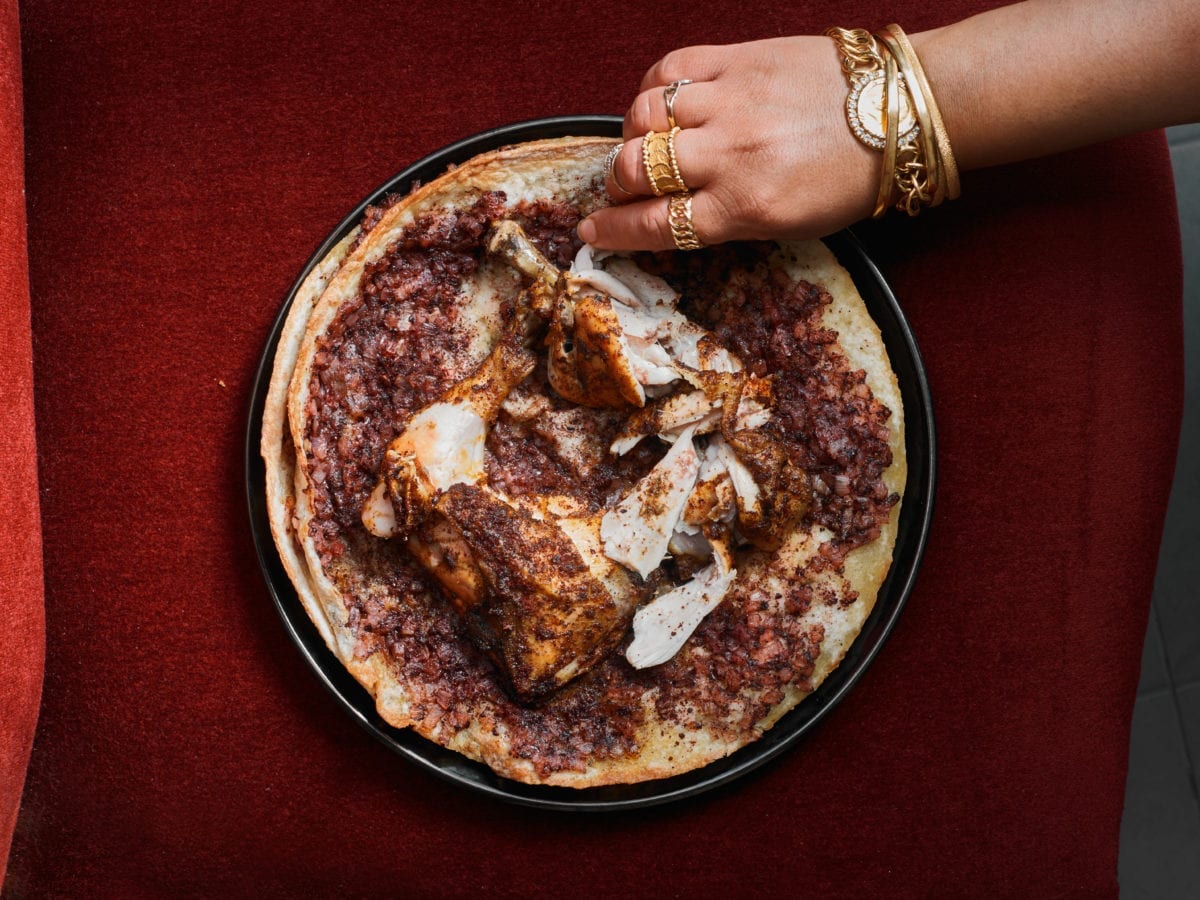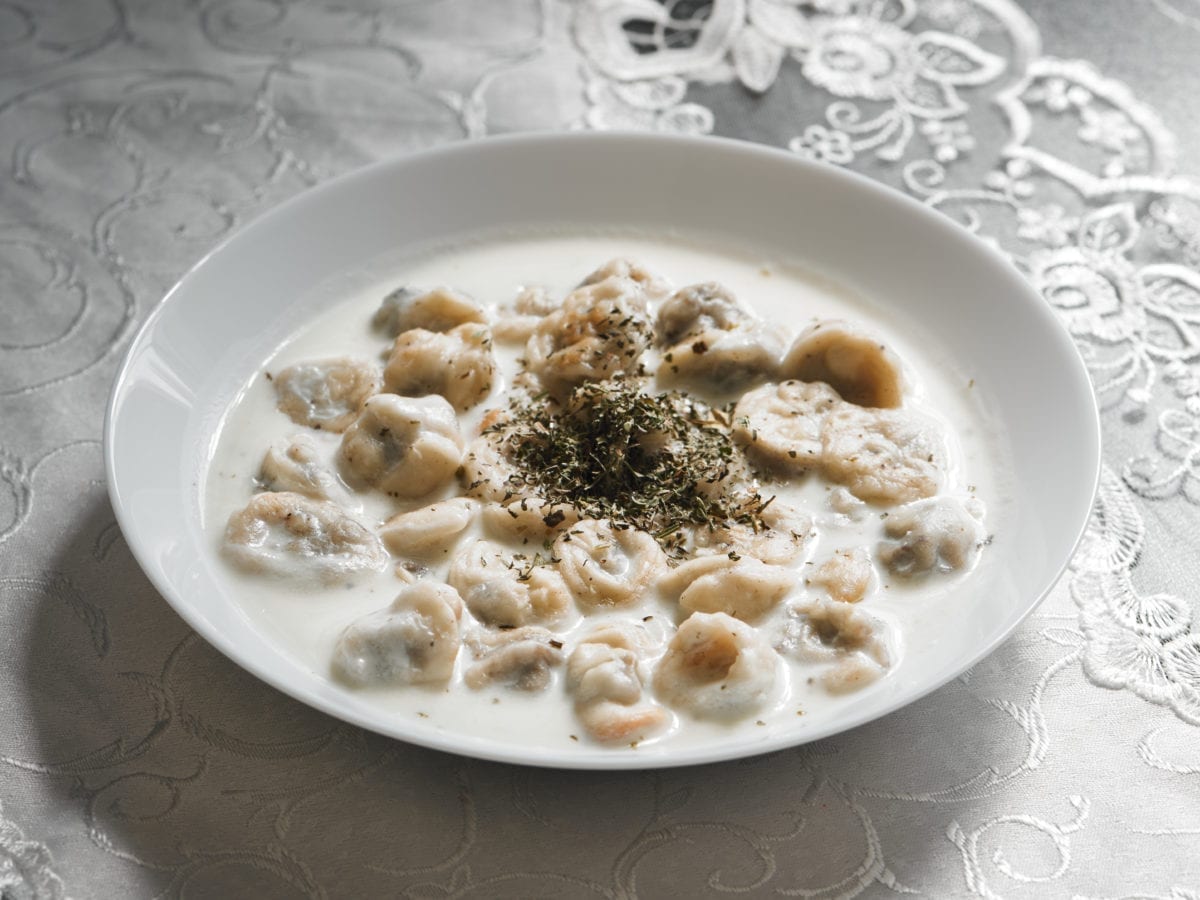“My father was a chef,” says Nadir Abu-Seif, explaining her attraction to the kitchen. “He worked in the Manta Ray restaurant for 10 years, and created their menus, but was forced to retire because of a heart condition. Half the dishes I make today I learned from him — though he didn’t like having people in his kitchen,” she says laughing. “Perhaps it’s hereditary, but I can tell what’s in a dish just by smell.”
Nadir was born and raised in Jaffa, her father’s hometown, and influenced by urban Palestinian cuisine and her mother’s country cooking from Taibeh in the Triangle region, which she brought with her to Jaffa. Nadir’s parents divorced when she was 11, and that’s when she began to cook. “There were nine of us living at home. My mother worked, and I had no choice. I had to cook. But I love it. Cooking relaxes me to this day,” Nadir says. She eventually made a career of it, working in various restaurants including one she ran with her first husband in Tel Aviv’s Hamasger Street. She would prepare dishes in her home kitchen and send packages to her husband at the restaurant to serve to diners.
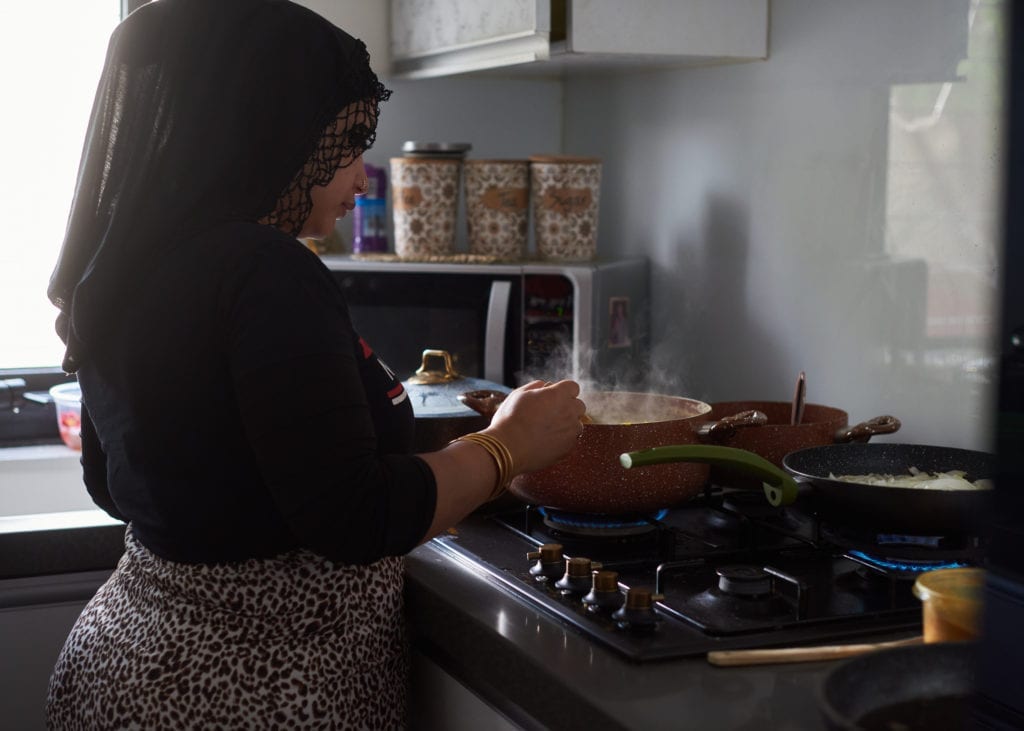
She’s home nowadays, expecting her fourth child, but it hasn’t slowed down her cooking. Her mother-in-law, who happened to come by while Nadir was busy in the kitchen, joked that when they were furnishing the house, they considered putting a bed by the kitchen because Nadir refused to budge from it. She dreams of opening her own restaurant, but not in Jaffa. “I’ll open it in Tel Aviv,” she says adamantly; “you don’t open businesses in Jaffa. My dream is a restaurant with my food. It will be based on everything I learned from my father, but I use my own herbs and spices — my taste.”
“My dream is a restaurant with my food. It will be based on everything I learned from my father, but I use my own herbs and spices — my taste”
— Nadir Abu-Seif
Nadir not only adds her own favorite flavors to traditional family recipes, she uses different techniques and styles of preparation, making the dishes her own. She puts the shish barak, meat-filled dumplings that are a staple of Palestinian cooking, into the yogurt soup cooking on the stove, chuckling as she remarks that her father’s dumplings are four times bigger than hers. She is very meticulous about their size and, unlike her father, she adds dried mint to the yogurt soup.
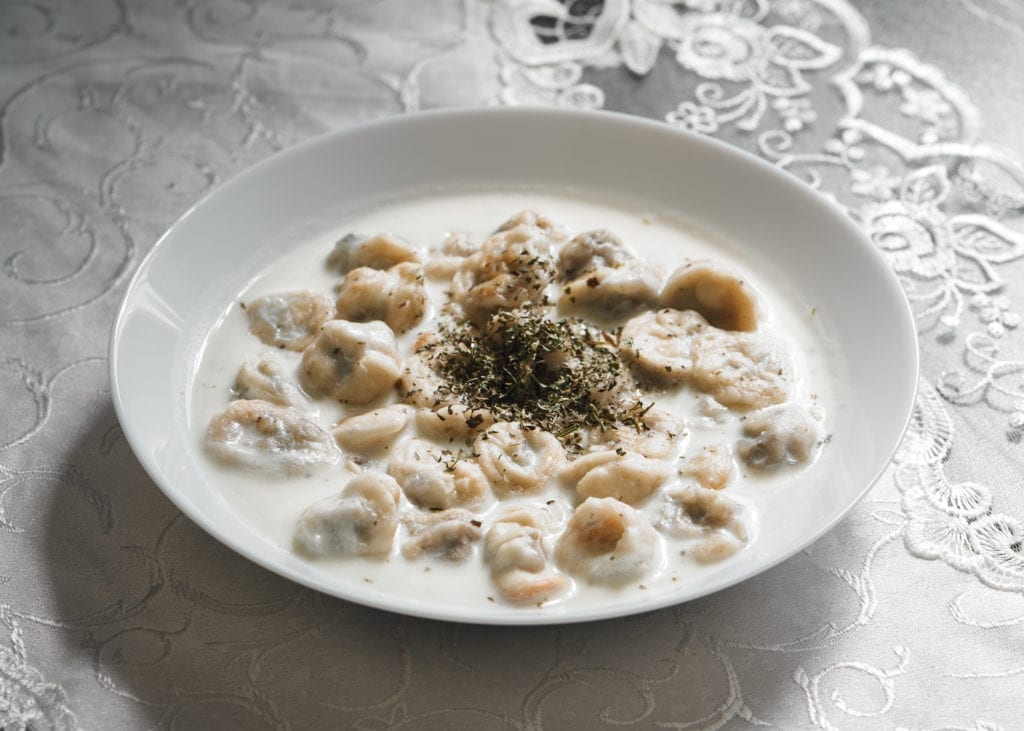
“That’s the charm of my dish,” Nadir says. “My father would never do it, but now he adds mint as well.” Apart from her natural talent, Nadir is open to a wide circle of culinary traditions beyond those of her childhood homes. Her former mother-in-law taught her to make Bukharian dishes, and her kitchen is heavily influenced by Turkish cuisine. Perhaps that explains her use of dried mint, which is popular in Turkish manti.
The only dish she doesn’t “play with,” as she says, is smat. “That is the Jaffa dish, identified with the town, and everyone here eats it,” she says. It’s a yellow lentil soup with broad noodles, served with chopped parsley and two preparations of onions: one lightly pickled in sumac, the other fried. It is a nutritious comfort food, with a range of flavors from sour to sweet courtesy of the onions.
Sayadieh or fried whole fish served on well-seasoned yellow rice, is another typical Jaffa dish, though many associate it with Lebanese cuisine. “Jaffa cooking is heavily influenced by the Lebanese,” says Nadir. “They have many dishes in common. Farm-country people are not familiar with this dish, and visitors to Jaffa are always surprised by it.”
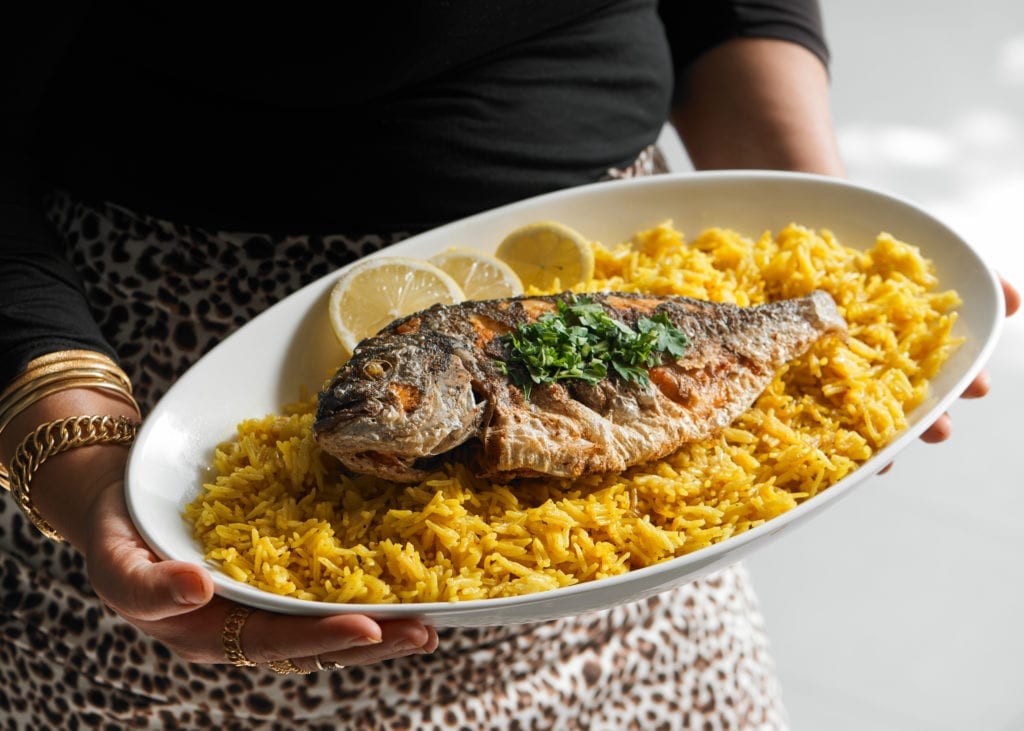
The cook Farah Raslan, who comes from south Lebanon but lives today in Kiryat Shmona, rounds out the story: “Sayadiyah is popular along the Mediterranean coast, from Tripoli in the north down to Sidon. Many sources say it’s Lebanese. In Israel it’s very common in the coastal towns of Akko and Jaffa, because of the proximity to the sea and the availability of fish. Apart from that, everyone knows that we are influenced by Syrian, Lebanese, and Palestinian cooking.”
So what did Nadir learn from her mother? Diwali, or stuffed grape leaves top the list. “Everyone makes them, and every place has its own version, like a sauce with tomatoes or onions, but I don’t like it that way,” she says. “I make the version of Taibeh, my mother’s version, with garlic and lemon.” In a more festive variation, she breaks open a rack of lamb, fills it with uncooked stuffed grape leaves, closes the rack again, and bakes it slowly. The result is meat that slides off the bone, and grape leaves that coalesce in the fat and absorb the flavor of the lamb.
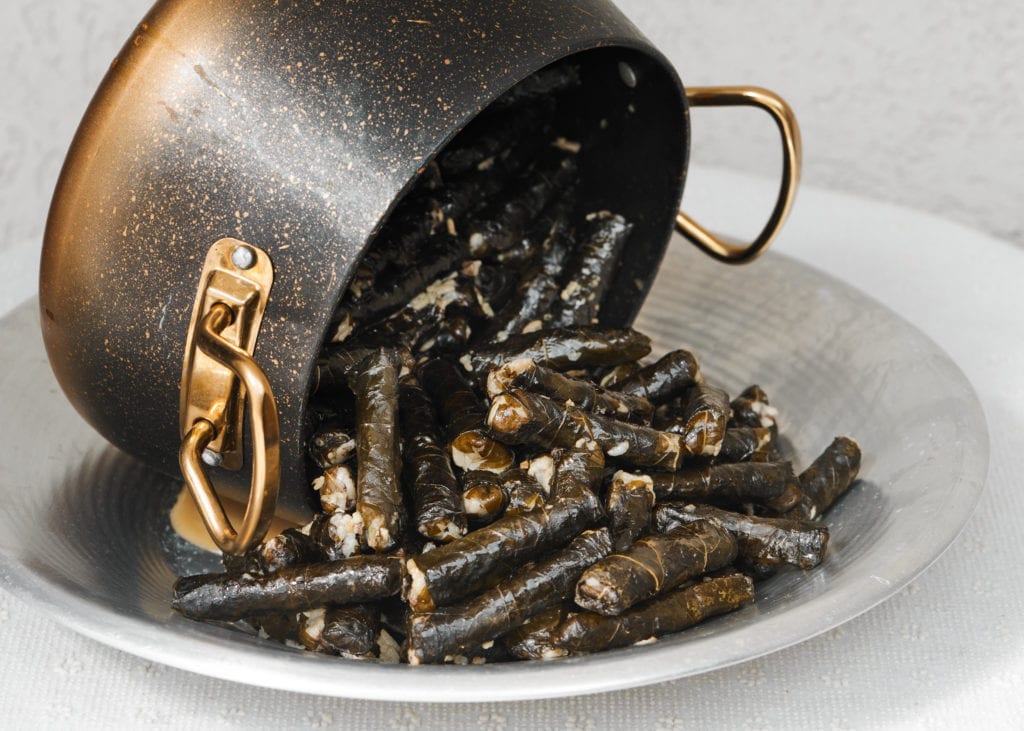
Nadir’s stuffed grape leaves are the thinnest you are likely to find. Is that not an exhausting process? we ask her. “I love it,” she answers. “I love doing work like that in the middle of the night, when the children are asleep.” She relates to the shish barak dumplings the same way — like the precise rolling of the grape leaves, they demand skilled fingers and patience.
While the dawali slowly cooks with the rack of lamb, she bakes large, very thin pitas, covers them with chopped onion mixed with a generous amount of olive oil and sumac, lays grilled chicken thighs on top, and puts the dish back in the oven for a gentle final browning. “I learned to cook musakhan from my mother,” she says referring to the iconic Palestinian dish of chicken with onions and sumac. “The country folk make it all the time. It’s the everyday dish, like mansaf for the Bedouin and sayadieh in Jaffa.” For special occasions, her family adds ground beef to the chopped onion mixture.
Nadir removes the dish from the oven after only a short time, strips the chicken off the bone, and serves it on a table alongside the worderous dishes she’s already prepared — and we start to eat.
